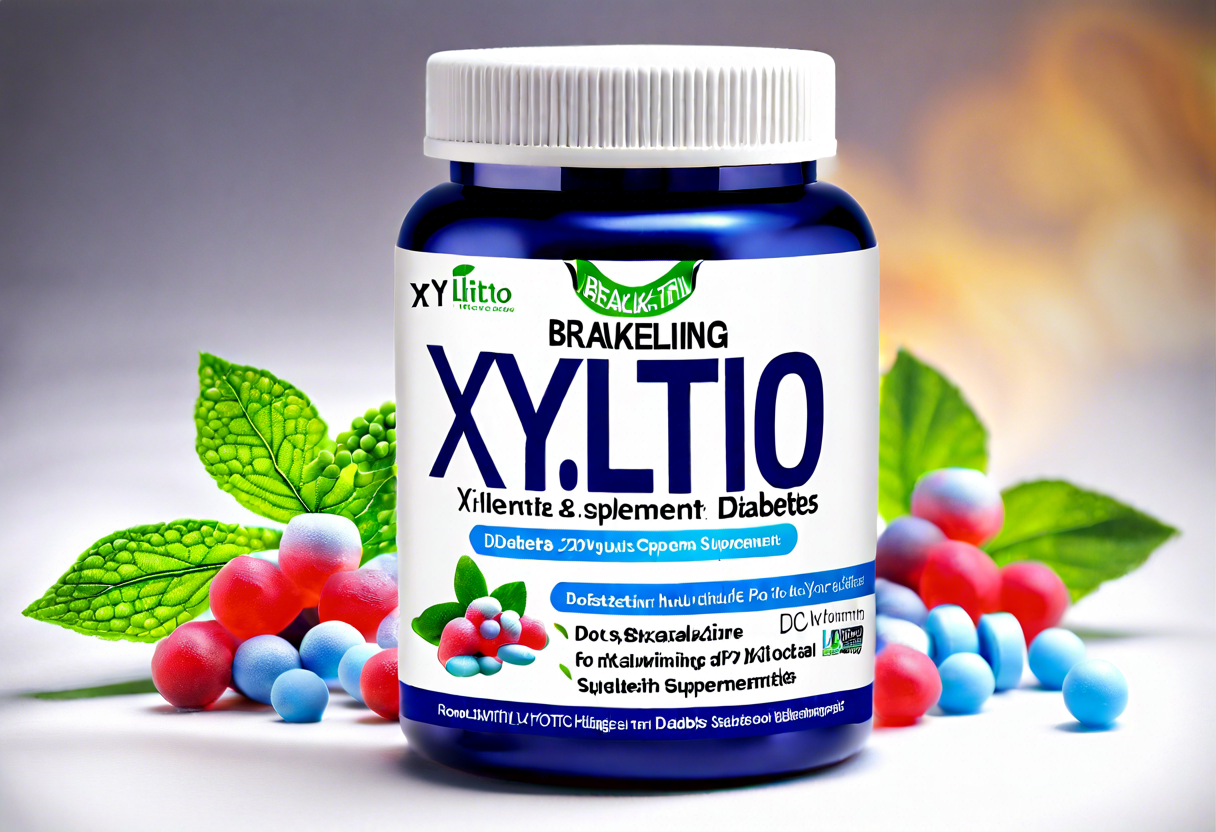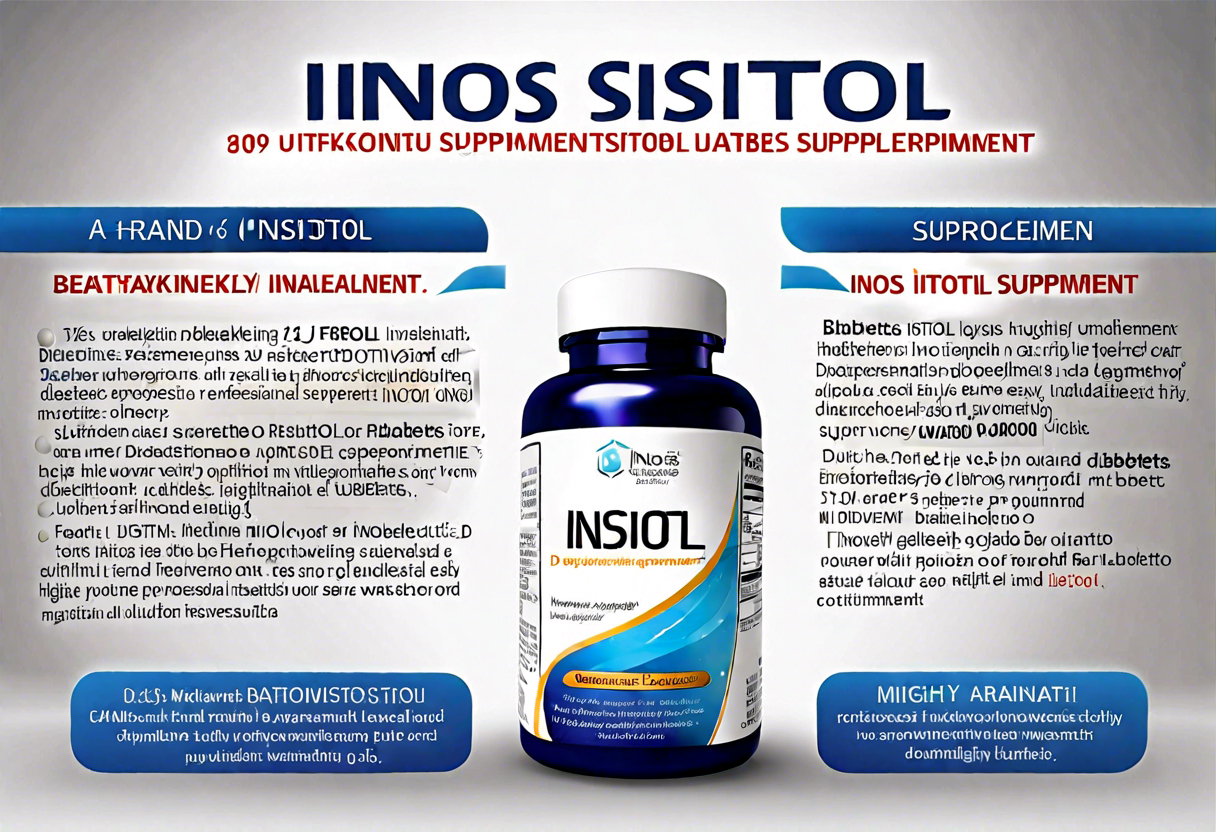Best Tips for Managing Type 2 Diabetes While Traveling
Traveling with type 2 diabetes requires careful planning and preparation to ensure that your health remains stable throughout your trip. By taking certain precautions and following a few essential tips, you can have a enjoyable and stress-free travel experience. Here are some of the best tips for managing type 2 diabetes while traveling:
1. Consult Your Healthcare Provider Before Travel
Before embarking on your trip, it is crucial to consult with your healthcare provider about your travel plans. They can provide you with personalized advice and recommendations based on your specific health needs and any potential complications that may arise during your journey. By discussing your itinerary and medication requirements, you can devise a suitable plan to manage your diabetes while traveling.
2. Pack Extra Medication and Supplies
When traveling, it’s essential to pack more than enough medication and supplies to last throughout your trip. This includes medications for diabetes management, such as insulin or oral medications, as well as testing supplies, lancets, glucose meters, and backup batteries. Keep medications in your carry-on luggage to ensure they are easily accessible during the journey. It’s also advisable to bring a written prescription from your doctor in case you need to purchase additional supplies while away from home.
3. Create a Travel Itinerary
Planning your travel itinerary in advance can help you manage your diabetes effectively. Consider the duration of flights or long car rides, meal times, and opportunities for physical activity. Incorporate breaks for meals and snacks to ensure you can adhere to your regular eating schedule. Research restaurants or food options at your destination that offer healthy and diabetic-friendly choices.
4. Stay Hydrated and Mindful of Mealtimes
Proper hydration is crucial for everyone, but it is especially important for people with diabetes. Drink plenty of water throughout your journey to prevent dehydration and help regulate your blood sugar levels. It’s also important to be mindful of mealtimes and maintain a regular eating schedule. Pack healthy snacks such as fruits, nuts, or granola bars to curb hunger and avoid relying on unhealthy options available during travel.
5. Exercise and Stay Active
Staying active is beneficial for managing diabetes and maintaining overall health. Incorporate physical activity into your travel plans by exploring walking tours, hiking trails, or participating in recreational activities at your destination. If you have an established exercise routine, try to stick to it while traveling. If necessary, consult your healthcare provider for recommendations on exercise modifications while away from home.
6. Keep Important Contact Information Handy
Ensure that you have essential contacts readily available during your trip. Carry a card or wear a medical ID bracelet indicating that you have diabetes. This will help medical professionals identify your condition in case of an emergency. Additionally, carry contact information for your healthcare provider, as well as important emergency contacts, in case you need assistance or medical advice while away from home.
By following these best tips for managing type 2 diabetes while traveling, you can ensure a safe and enjoyable journey. Prioritize your health needs, plan ahead, and enjoy your travel experiences while maintaining control over your diabetes management. Always remember to consult with your healthcare provider for personalized advice and recommendations tailored to your specific needs.
Essential Items to Pack for a Diabetic Traveler
When traveling with type 2 diabetes, it is important to be well-prepared and ensure you have all the necessary items to manage your condition. Here are some essential items that every diabetic traveler should pack:
-
Medications: Make sure to pack all your prescribed diabetes medications, including insulin or oral medications. It’s a good idea to carry extra supplies in case of travel delays or emergencies. Ensure that your medications are properly labeled and stored in their original packaging.
-
Glucose meter: A reliable blood glucose meter is crucial for monitoring your blood sugar levels while traveling. Carry spare batteries, lancets, and test strips to maintain your regular testing routine. It is also recommended to bring a record book or a smartphone app to keep track of your readings.
-
Snacks: Keep a selection of healthy snacks on hand to help manage your blood sugar levels during long journeys or in situations where you may not have immediate access to food. Opt for protein-rich snacks like nuts, seeds, or protein bars to keep hunger at bay and prevent blood sugar spikes.
-
Water bottle: Staying hydrated is vital for everyone, especially for those with diabetes. Carry a refillable water bottle and remember to drink water regularly throughout your travels. This will help prevent dehydration and maintain optimal blood sugar control.
-
Identification: It is essential to carry identification that states you have diabetes. This can be especially useful in case of emergencies. Wear a medical alert bracelet or carry a card in your wallet that includes your name, contact information, emergency contact details, and any relevant medical information.
-
Insulin syringes or pen needles: If you use insulin injections, make sure to pack enough syringes or pen needles for the duration of your trip. It’s advisable to bring extra supplies in case of loss, breakage, or any unforeseen circumstances.
-
Cooler bag: If you are traveling with insulin that needs to be refrigerated, invest in a portable cooler bag to keep it at the appropriate temperature. This will ensure that your insulin remains effective throughout your journey.
-
Comfortable footwear: Walking and exploring new places are common activities while traveling. To take care of your feet, which can be more susceptible to complications due to diabetes, pack comfortable and supportive shoes. This will help prevent blisters and foot injuries.
Remember, it’s always advisable to consult with your healthcare provider before traveling to discuss any specific precautions or strategies to manage your type 2 diabetes while on the go. By packing these essential items, you can ensure a smoother and more enjoyable travel experience while effectively managing your diabetes.
Exploring Diabetic-Friendly Food Options While on Vacation
Traveling with type 2 diabetes doesn’t have to mean sacrificing delicious meals while on vacation. With a little planning and knowledge, you can explore a variety of diabetic-friendly food options that are both healthy and satisfying. Here are some tips to help you make the most of your dining experiences while traveling:
-
Research Local Cuisine: Before embarking on your trip, take some time to research the local cuisine of your destination. This will give you an idea of what types of foods to expect and help you identify diabetic-friendly options. Look for dishes that are based on lean proteins, whole grains, fruits, and vegetables.
-
Choose Healthy Restaurants: When dining out, opt for restaurants that offer healthy menu choices. Look for establishments that focus on fresh, locally sourced ingredients and offer a variety of vegetable-based dishes. Many restaurants now have online menus, allowing you to review the options beforehand and make an informed choice.
-
Control Portion Sizes: Portion control is crucial when managing type 2 diabetes. To avoid overeating, consider sharing a meal with a friend or ordering an appetizer as your main course. If portions are still too large, ask for a take-out container and save the leftovers for another meal.
-
Be Mindful of Carbohydrates: Carbohydrate management is an essential part of diabetes control. While on vacation, be mindful of your carbohydrate intake and opt for whole grains, such as brown rice or quinoa, instead of refined carbohydrates. Choose whole fruit instead of fruit juices or desserts that are high in added sugars.
-
Explore Local Markets: Visiting local markets is a great way to experience the authentic flavors of a destination while finding fresh and healthy ingredients. Look for local fruits, vegetables, and lean proteins to incorporate into your meals or snacks. You can even try out new recipes using these local ingredients in your accommodation if you have access to a kitchen.
-
Stay Hydrated: Traveling can be dehydrating, so it’s important to stay hydrated, especially if you have diabetes. Carry a refillable water bottle with you and aim to drink water throughout the day. Avoid sugary drinks and opt for water, unsweetened tea, or infused water for a refreshing and hydrating choice.
-
Pack Snacks: Having some diabetic-friendly snacks on hand can help prevent low blood sugar episodes while traveling. Pack snacks like nuts, seeds, protein bars, and fresh fruit to keep hunger at bay and maintain stable blood sugar levels between meals.
Remember, managing type 2 diabetes while traveling is all about balance and making healthy choices. By being prepared, seeking out diabetic-friendly options, and staying mindful of your carbohydrate intake, you can enjoy a variety of delicious meals and have a memorable vacation while keeping your diabetes under control. Happy travels!
Staying Active and Maintaining Exercise Routines While Traveling with Type 2 Diabetes
Traveling can disrupt our routines, especially when it comes to exercise. But for individuals with type 2 diabetes, it is crucial to maintain a regular exercise routine even while on the go. Exercise plays a vital role in managing blood sugar levels and overall well-being. Here are some helpful tips to stay active and maintain exercise routines while traveling with type 2 diabetes.
-
Plan Ahead: Before embarking on your trip, research the facilities available at your destination. Look for hotels with fitness centers, swimming pools, or nearby walking trails. Having access to these amenities can make it easier to incorporate exercise into your daily routine.
-
Pack the Right Gear: It’s essential to pack the necessary gear for exercising while traveling. Invest in comfortable workout clothes, supportive shoes, and any mobility aids you may need. Don’t forget to bring extra supplies such as glucose tablets, a blood glucose monitor, and insulin if necessary.
-
Make Time for Movement: Schedule physical activity into your daily itinerary, just like any other planned activity. Whether it’s a morning jog, a brisk walk after lunch, or yoga in your hotel room, allocate specific time slots for exercise. Even short bursts of activity can make a significant impact on your blood sugar levels.
-
Choose Active Sightseeing Options: Instead of relying solely on tour buses or taxis, opt for more active ways of exploring your destination. Consider walking or biking tours to get your steps in while sightseeing. Take the stairs instead of the elevator whenever possible, and explore local parks or hiking trails for an immersive outdoor experience.
-
Stay Hydrated: Hydration is crucial, especially when you have diabetes. Carry a refillable water bottle with you at all times and make sure to drink plenty of fluids throughout the day. Staying hydrated helps regulate blood sugar levels and supports overall health and well-being.
-
Monitor Blood Sugar Levels: Regularly check your blood sugar levels before, during, and after exercise, especially when traveling. Different activities may impact your blood sugar levels differently, so it’s essential to be aware and make any necessary adjustments to your diabetes management plan.
-
Be Mindful of Time Zones: If you are traveling to a different time zone, it’s important to carefully manage your medication and insulin dosages. Consult with your healthcare team before your trip to create a plan that accommodates potential time differences. Additionally, be mindful of your meal and snack times to maintain a stable blood sugar level.
-
Listen to Your Body: While it’s crucial to stay active, it’s equally important to listen to your body’s needs. If you feel fatigued or experiencing any discomfort, take a break and rest. Modify your exercise routine as necessary, ensuring it aligns with your health condition and abilities.
Remember, staying active and maintaining exercise routines while traveling with type 2 diabetes is not only beneficial for managing your condition but can also enhance your travel experience. physical activity into your itinerary will help you stay healthy, energized, and enjoy your journey to the fullest.
Precautions and Considerations when Traveling with Diabetes Medication and Supplies
Traveling can be an exciting and enriching experience, but for individuals with type 2 diabetes, it requires careful planning and preparation. One of the key aspects to consider when traveling with diabetes is ensuring you have all the necessary medication and supplies to manage your condition effectively. Here are some precautions and considerations to keep in mind:
-
Documentation and Prescription: Before embarking on your journey, make sure you have all the required documentation and prescriptions for your diabetes medication. This is particularly important when traveling internationally as different countries may have varying regulations regarding the importation of medications. It’s always a good idea to carry a letter from your healthcare provider that states your medical condition, treatment plan, and the need for your specific medications.
-
Pack Extra Supplies: It’s crucial to pack more than enough diabetes supplies for the duration of your trip. This includes glucose meters, test strips, lancets, insulin pens, syringes, and any other medication you may require. Always pack extra supplies to account for unexpected delays, loss, or damage. Additionally, it is advisable to split your supplies between different bags or traveling companions in case one gets lost or stolen.
-
Storage and Temperature Control: Proper storage of diabetes medication and supplies is essential to maintain their efficacy. Insulin, for instance, should be kept at the appropriate temperature using cool packs or insulated pouches. Avoid exposing your medication to extreme heat or cold, such as leaving it in direct sunlight or storing it in the overhead compartment of a plane. Consult the instructions provided by the manufacturer or your healthcare provider for specific storage guidelines.
-
Carry Snacks and Hydration: Maintaining stable blood sugar levels while traveling is crucial. Always carry diabetic-friendly snacks, such as nuts, fruits, or protein bars, to help address any unexpected drops in blood sugar. It’s also essential to stay hydrated by drinking plenty of water. Avoid sugary beverages or excessive alcohol consumption, as they can disrupt your blood sugar levels.
-
Research Medical Facilities: Before traveling to a new destination, research local medical facilities. Identify hospitals or clinics that have experience in treating diabetes-related emergencies. It’s also advisable to carry a medical ID bracelet or card that includes essential information about your condition, medications, and emergency contacts. In case of an emergency, this information can be invaluable for healthcare providers.
-
Know your Rights: Familiarize yourself with the rights and protections for travelers with diabetes. Some countries may allow the carrying of diabetic medication and supplies in carry-on luggage, even if there are restrictions on liquids. Knowing your rights can help you address any potential issues during security screenings or customs inspections.
Remember, planning ahead and taking necessary precautions can help ensure a smooth and enjoyable trip while managing your diabetes. Always consult with your healthcare provider for personalized advice and recommendations based on your specific needs. By taking the necessary steps to protect your health, you can travel with peace of mind and fully embrace the adventures that await you.
Conclusion
Traveling with type 2 diabetes can be a manageable and enjoyable experience with the right preparation and mindset. By following the best tips for managing diabetes while traveling, individuals can ensure their health and well-being remain a top priority.
Packing essential items such as blood glucose meters, insulin, medication, and emergency contact information is crucial for a diabetic traveler. These items provide a sense of security and enable individuals to monitor their blood sugar levels effectively while on the go.
Exploring diabetic-friendly food options while on vacation is another key aspect of managing type 2 diabetes while traveling. By researching and planning ahead, individuals can identify local eateries that offer healthy and nutritious meals. This way, they can enjoy the local cuisine without compromising their dietary needs.
Staying active and maintaining exercise routines are equally important for managing diabetes during travel. Engaging in physical activities like walking, cycling, or swimming can help regulate blood sugar levels and minimize the impact of any indulgences. Additionally, incorporating exercise into sightseeing plans allows for a more immersive travel experience.
Precautions and considerations when traveling with diabetes medication and supplies are paramount. Individuals should carry necessary documentation, prescription details, and extra supplies in case of unexpected delays or loss. Storing medications properly, keeping them easily accessible, and having a backup plan for emergency situations will ensure smooth travel.
It is also crucial for diabetic travelers to communicate their condition to travel companions, tour guides, or hotel staff. Informing others about type 2 diabetes helps increase awareness and enables immediate assistance if needed. Additionally, wearing a medical alert bracelet or necklace is recommended in case of emergencies.
Managing type 2 diabetes while traveling requires careful planning and preparation. By following the best tips, packing essential items, exploring diabetic-friendly food options, staying active, and considering precautions when traveling with medication and supplies, individuals with type 2 diabetes can enjoy their travel experiences with peace of mind. With proper management, travel can become an enriching and fulfilling journey while keeping diabetes under control.









